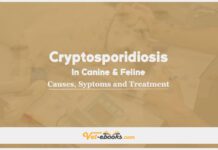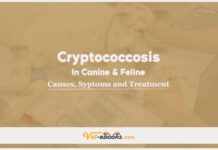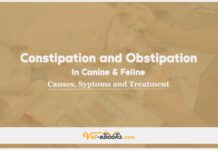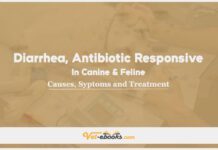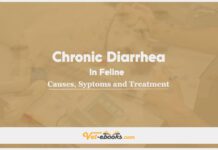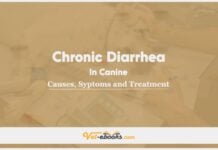Esophageal Stricture In Canine and Feline: Causes, Symptoms and Treatment
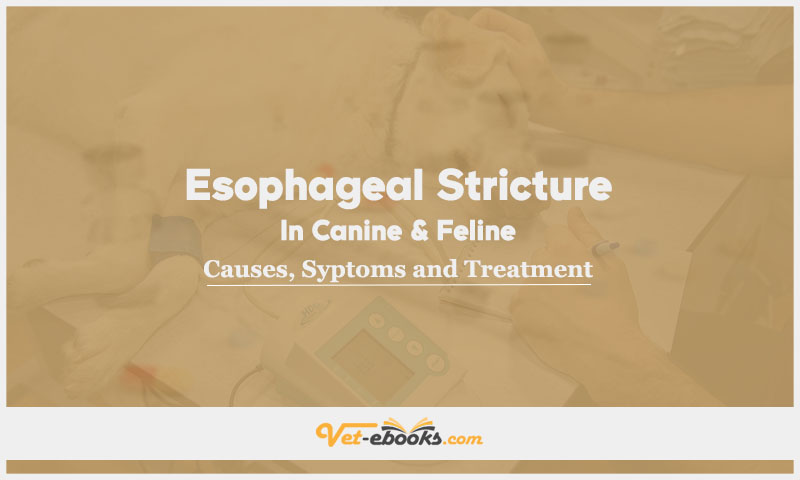
Overview
Esophageal stricture is a pathological condition characterized by a permanent constriction of the esophagus, leading to either partial or full obstruction.
Causes of Esophageal Stricture In Canine and Feline
Causes
- The leading cause of benign esophageal stricture is reflux that occurs during anesthesia, which accounts for around 65% of cases.
- It is possible that the lower esophageal sphincter (LES) relaxing during anesthesia could make gastroesophageal reflux more likely, which could damage the esophagus mucosa with acidic substances.
- Esophageal foreign bodies can cause mucosal injury if they exceed an angle of 270°.
- Esophagitis resulting from the ingestion of specific tablets and capsules is a well-documented phenomenon.
- The medications most frequently associated with this condition are doxycycline, clindamycin, alendronate, and aspirin.
- Gastroesophageal reflux refers to the regurgitation of stomach contents into the esophagus.
- The patient experiences an extended duration of expelling gastrointestinal contents by vomiting.
- The ingestion of corrosive chemicals.
- Esophageal neoplasia, specifically squamous cell carcinoma and lymphoma, are the prevailing types of malignancies affecting the esophagus.
- The parasitic nematode Spirocerca lupi is the cause of the pathological condition known as Spirocerca lupi granuloma.
- The occurrence of iatrogenic injuries in the context of endoscopy.
- The presence of a vascular ring abnormality can serve as an extraluminal factor contributing to the development of focal esophageal constriction.
Risk factors
- General anesthesia, particularly when utilizing medications that reduce lower esophageal sphincter (LES) tone, might pose challenges in certain scenarios.
- These challenges are particularly evident when the patient is placed in the inclined position and involve large-breed dogs with deep chests positioned in sternal recumbency.
- Oral drugs are administered via dry ingestion.
- The act of ingesting foreign objects.
Pathogenesis of Esophageal Stricture In Canine and Feline
- Benign strictures occur when there is erosion and ulceration of the esophageal mucosa that extends around the entire circumference.
- Regardless of the initial cause, the development of esophagitis leads to a decrease in the tone of the lower esophageal sphincter (LES).
- This, in turn, increases acid reflux and esophagitis.
- In cases of severe esophagitis, damage can extend to the deeper layers of the esophagus, including the lamina propria and muscularis.
- This triggers the proliferation and contraction of fibroblasts, ultimately leading to the formation of strictures.
- On the other hand, malignant strictures are rare in dogs and cats and typically result from the direct invasion of tumors.
Symptoms (History & Physical Examination) of Esophageal Stricture In Canine and Feline
History
- Symptoms such as odynophagia, dysphagia, heightened salivation, regurgitation, anorexia, and weight loss are commonly observed in patients with a progressively narrowing stricture.
- These indications typically exhibit a progressive nature.
- If the act of regurgitation results in the occurrence of aspiration pneumonia, it is possible for symptoms such as coughing and difficulty breathing (dyspnea) to manifest.
Physical Examination
The animal may have suboptimal physical health due to an inadequate diet.
Diagnosis of Esophageal Stricture In Canine and Feline
1- From History and Physical Examination
2- Diagnostic Procedures
CBC/BIOCHEMISTRY/URINALYSIS
- Typically unremarkable.
- Secondary aspiration pneumonia can lead to the presence of neutrophilic leukocytosis.
OTHER LABORATORY TESTS
Typically normal.
Imaging
- Thoracic radiographs often exhibit no significant abnormalities, unless there is a concurrent occurrence of secondary aspiration pneumonia.
- In some cases, there may be the presence of gas-filled expansion or foreign substances located at the head of the constriction.
- The videofluoroscopic barium swallow is considered the preferred method for this purpose.
- The incorporation of barium into food enhances the sensitivity of the technique.
- In the event that videofluoroscopy is not accessible, it is recommended to deliver a mixture of liquid barium and meals, followed promptly by radiography.
- Abnormal peristalsis in the proximal region of the stricture site may occur in conjunction with esophagitis.
- Typically, a sudden constriction of the esophagus lumen can be observed at the site of the stricture.
- The most commonly employed method to reliably show this phenomenon involves the utilization of canned food or kibble that has been combined with barium.
- It is possible for a phenomenon to exhibit many constraints.
- A lot of the time, strictures that are caused by reflux happen in the area of the body between the base of the heart and the diaphragm.
- A significant number of cases of pill-induced strictures are located in close proximity to the thoracic inlet, with cats being particularly susceptible to this condition.
During endoscopy, it is typically observed that there is a sudden reduction in the diameter of the lumen at the location of the stricture.
The mucosa may exhibit a typical appearance characterized by smoothness and pink coloration, or it may manifest hyperemia and ulceration in the presence of esophagitis.
The presence of scar tissue may or may not be readily apparent.
Frequently, the expansion of the scope is not possible beyond the imposed limitation without resorting to balloon dilation.
Nevertheless, it is important to note that in the case of large dogs, there may be strictures that result in a luminal diameter reduction of more than 50%.
However, it is possible for these strictures to go unnoticed by inexperienced endoscopists, particularly when utilizing endoscopes with smaller diameters.
Novice endoscopists may fail to identify strictures located directly at the lower esophageal sphincter (LES), as they may mistakenly believe that they have successfully passed the endoscope through the LES without realizing the presence of a stricture.
The determination of the stricture’s position should be conducted by measuring from the upper canine teeth.
3- Differential Diagnosis
- Megaesophagus.
- Esophageal foreign body.
- Esophageal neoplasia.
- Extrinsic esophageal compression, such as a mass or abscess.
- Gastroesophageal reflux.
- Vomiting due to any cause.
- Oropharyngeal dysphagia.
- Vascular ring anomaly
Treatment of Esophageal Stricture In Canine and Feline
General:
- The occurrence of esophageal perforation may arise as a result of very vigorous balloon dilatation of the stricture.
- Excessive dilatation can also lead to heightened trauma, which may subsequently prompt rapid reformation of the stricture.
- Hence, there are instances where it is deemed suitable to progressively augment the diameter of balloons.
Medications:
- After undergoing dilatation, pharmacological treatments for esophagitis are administered.
- These treatments include the use of cisapride at a dosage of 0.5-0.75 mg/kg orally every 8 hours to augment lower esophageal sphincter (LES) tone and improve gastric emptying.
- Additionally, omeprazole is prescribed at a dosage of 1-2 mg/kg orally every 12 hours to reduce gastric acid secretion.
- Sucralfate suspension, administered orally at a dosage of 0.5–1 g per patient every 6–12 hours as necessary, has the potential to provide partial relief from pain.
- If aspiration pneumonia is evident, broad-spectrum antibiotics are used.
Some Notes:
- Utilizing outpatient medical therapy may temporarily help in treating small strictures; however, if the stricture is not fully resolved, the patient is more likely to experience esophageal foreign bodies in the future.
- The presence of increasingly stringent strictures might result in the gradual development of malnutrition and the potential occurrence of aspiration pneumonia, necessitating the need for intervention within a hospital setting.
- In the event of complications such as esophageal perforation or aspiration pneumonia, it becomes necessary to provide inpatient care.
Do You Want To Increase Your Veterinary Knowledge and Practical Skills?
You Can Now Browse and Download +3000 Books For Veterinary Professionals & Students Online.
Download Veterinary Books

